
|   |

|   |
Discovery of India: a heartwarming tribute - Dr. Sunil Kothari e-mail: sunilkothari1933@gmail.com Photos: Nandakumar Patil November 26, 2013 Discovery of India, dance drama choreographed by Dr. Sandhya Purecha was staged at the Nehru Centre, Mumbai on 21st November. Based on Pandit Jawaharlal Nehru's vision it was choreographed first by Shanti Bardhan in 1947 and was later choreographed by Guru Acharya Parvatikumar in the 1950s both of which were produced by the Indian National Theatre. More than fifty years later, the Nehru Centre produced this dance drama. Sandhya Purecha, a senior disciple of Acharya Parvatikumar conceived this timeless saga of Indian history and evolution on the occasion of Nehru's 125th birth anniversary and the first death anniversary of Acharya Parvatikumar. 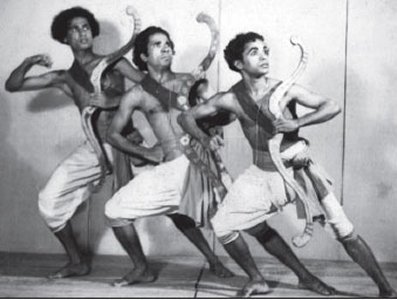
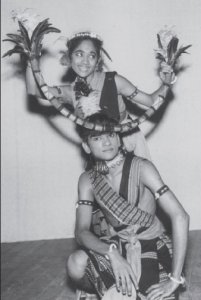
The audience response was overwhelming. The leading lights of the city including artistes, scholars, government officials including Ashutosh Ghorpade, Director, Directorate of Cultural Affairs, Govt. of Maharashtra, Dr. Uma Vaidya, Vice- Chancellor Kavikulaguru Kalidas Sanskrit University, Ramtek, late Guru Parvatikumar's wife Sumati Parvatikumar were present. The music score composed by Manoj Desai and arranged by Mandar Parkhi resonated in the hall. The music with catchy tunes, beats and blending of eclectic musical instruments unfolded every era of human history right from the Stone Age to the post-independence period of India. Traditional Chhau dancers, disciples of Shashadhar Acharya from Orissa, Kathakali artiste from Kerala, Bharatanatyam artistes from Bhilai, Kuchipudi artiste from Ahmedabad and disciples of gurus from the Mumbai dance fraternity, Dr. Kanak Rele, Darshana Jhaveri, Asha Joglekar, Geeta Radhakrishnan and Daksha Mashruwala were also an integral part of the dance drama for the commencing and concluding pieces and essaying the roles of various characters. 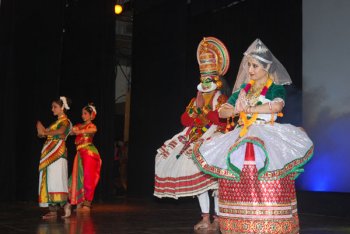
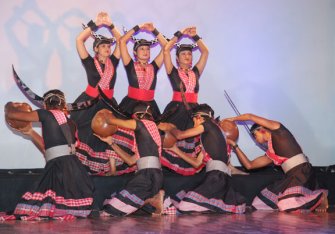 Naga pooja 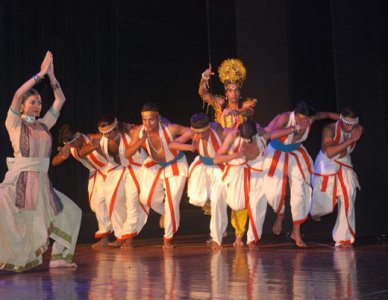 Surya 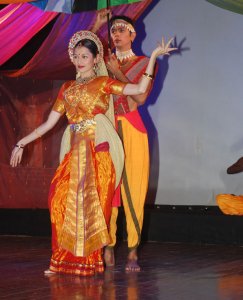 Usha The performance commenced with national integration through the seven Indian classical dance styles. The costumes designed by Navneet Patil and Bhavana Shah did justice to the choreography. The variety of fabrics and designs with head gear and jewelry used for innovative depictions of the Stone Age, the lifestyle of the Dravidians and the Aryans, the images of Usha and Lord Surya were noteworthy. The Sanskrit shlokas were set to dance imaginatively. The depiction of two epics, the Ramayana and the Mahabharata; the Vedic-Upanishad period; the impact of Sanskrit savants like Panini, Bharata, Bhaskaracharya were included to suggest passage of time and Indian civilization. The depiction of different religious faiths, the war led by Kautilya through Chandragupta Maurya and the spread of peace and non-violence by Gautam Buddha followed in quick succession. The cultural efflorescence in the country reflected in the regional dance forms like Warkari, Chhau and Charukela; excerpts from dramatists like Kalidasa's Abhijnana Shakuntalam and Shankaracharya's Ardhanarishwara verses. The invasion by the Persians, defeat of Afzal Khan by Shivaji Maharaj and the rule of the Moghuls depicted by Akbar's patronage of the arts were interwoven in a seamless manner. The next phase of medieval Indian history with war sequences were well executed using the dance forms like Mawla and Chhau for the war episodes. 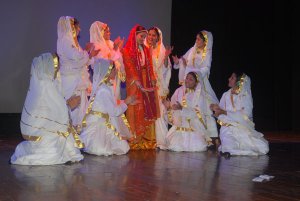 Opanna 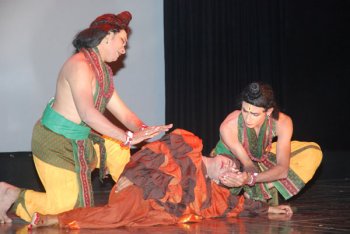 Ram, Lakshman, Jatayu 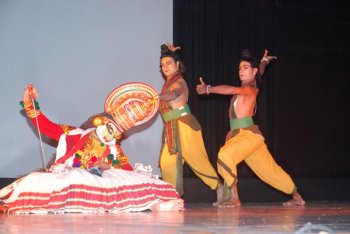 Rama, Ravana The entry of the East India Co. and their permanent capture and rule over us for 100 years, the revolt of 1857 and struggle for independence were stimulating. What was most touching was the visual of the hoisting of national flag on the screen behind the stage with a silhouette of the artiste playing the role of Mahatma Gandhi to the recitation of Vande Mataram. The formation of States was shown with variety and vibrancy of folk dances like Bhangra from the North, Naga dance from the East, Karakattam from the South, Koli dance and Kalbelia from the West. How normal life was resumed in the country simultaneously with the rapid advancement in technology, the death of Gandhiji and sorrow encompassing the country was depicted through the poignant "Vaishnava Jan to" bhajan with a simple note on the flute. The lighting by Sheetal Talpade and the extremely well edited screen projection of rare footage of Independence movement, inspired by Shyam Benegal's Bharat Ek Khoj, with the commentary by Kumar, proved what amazing team work can do for an artistic endeavour. The finale highlighted the spirit with Pandit Nehru's coming to the forefront, uniting the country. Presented by 100 artistes and 7 classical dance forms, with the support of Sarfoji Raje Bhosale Centre, the glimpses of India through Pandit Nehru's vision left an indelible impression on viewers. One did not realize that within two hours one was enjoying the Discovery of India presented in such an easy to relish manner. Mr. Kazi, Director, Cultural Dept, Nehru Centre, and Sandhya Purecha indeed deserve our gratitude for such a heartwarming tribute.  Dr. Sunil Kothari is a dance historian, scholar, author and a renowned dance critic. He is Vice President of World Dance Alliance Asia Pacific India chapter, based in New Delhi. He is honored by the President of India with Padma Shri, Sangeet Natak Akademi award and Senior Critic Award from Dance Critics Association, NYC. He is a regular contributor to www.narthaki.com, the roving critic for monthly magazine Sruti and is a contributing editor of Nartanam for the past 12 years. Post your comments Pl provide your name and email id along with your comment. All appropriate comments posted with name and email id in the blog will also be featured in the site. |